
 ENT Clinic (Ear, Nose, & Throat)
ENT Clinic (Ear, Nose, & Throat)
Our ENT Clinic has a team of medical professionals with extensive experience in the diagnosis and treatment of pediatric and adult ear, nose, and throat diseases.
Outpatient treatments includes: trauma and congenital ENT diseases, allergic rhinitis, sinusitis, nasal polyps, inflammation of the outer and middle ear, hearing disorders, vestibular dysfunction, voice-related diseases, acute and chronic inflammation of the pharynx, dysfunction of the eustachian tube, sleep breathing disorders in children and adults (severe snoring and other symptoms), benign and malignant ENT tumors.
Outpatient surgery is available for mild trauma, mild sinusitis, secretory otitis media (tympanotomy and tube placement), simple tympanic membrane repair, vocal cord nodules, vocal cord polyps, and removal of foreign bodies from various parts of the ear, nose, and throat.
Inpatient surgery patients are mainly suffering from nasal ventilation dysfunction, severe sinusitis, nasal polyps, and sleep breathing diseases in children and adults.
Professor Han Demin, a nationally renowned expert, academic at the Chinese Academy of Engineering, president of the China Association for the Promotion of International Exchange in Health Care, and former president of Beijing Tongren Hospital, has a studio in our department, and his team delivers high-level medical services to patients.
OUR CLINICIANS

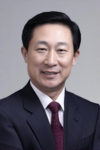
Demin HAN
ENT Physician, CAE Member Academic

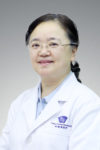
Xiaowei CHEN
MD, Professor, Chief Physician, Department of Otorhinolaryngology, Peking Union Medical College Hospital

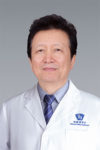
Yunchuan LI
PhD Supervisor, Chief Physician, Professor

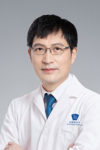
Jun WANG
ENT Physician, Chief Physician, Professor, Doctoral Supervisor

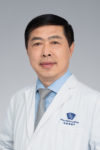
Weiguo ZHOU
Chief Physician, MD


Xutao MIAO
Chief Physician

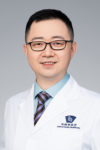
Alex LIU
Chair of ENT, DTU, DCU and Satellite Clinics, Associate Chief Physician


CUI, Weixin
Associate Chief Physician


Jing LIN
Attending Physician


William XIAO
ENT Physician

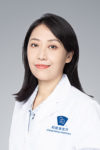
Chen HU
ENT Physician
Introduction of Academician Workstation
Academician Han Demin of the Chinese Academy of Engineering is a leading figure in otolaryngology and head and neck surgery in China. He serves as the president of the China Association for the Promotion of International Exchanges in Health Care and as the chairman of the Board of Directors of the World Council of Chinese Otolaryngology and Head and Neck Surgery.
Under the leadership of Academician Han Demin, the DCU Academician Workstation takes ENT as its entry point to strengthen the promotion of innovative concepts in disease prevention and treatment, integrate advanced medical technology resources, and improve the development of the discipline of otorhinolaryngology and its clinical diagnostic and therapeutic capabilities.
While focusing on the application of difficult technology and the promotion of universal technology, the academician workstation will adhere to the internationalized health service model and provide patients with one-stop, comfortable and convenient services, so that more patients can be benefited.
Academician workstation expert team:
Service Scope
The Department of ENT can diagnose and treat the following ear, nose and throat disorders, including but not limited to:
Diseases of the ear
- Sudden deafness
- Inflammation of middle ear and external ear canal
- Secretory otitis media
- Trauma
- Cerumen
- Otomycosis (fungal infection)
- Cerumen impaction
- Abnormal development of the auricle in newborns
- Vertigo, tinnitus, adult and pediatric hearing disorders
Nose, sinus and other associated diseases
- Allergic and non-allergic rhinitis
- Sinusitis
- Enlarged adenoids
- Deviated septum
- Rhinorrhea
- Tumors of the nose or sinuses
- Sleep apnea syndrome and other sleep disorders
Laryngeal disorders
- Acute and chronic laryngitis
- Vocal nodules and polyps
- Tonsillitis
- Tonsillar hypertrophy
The scope of surgical treatment in ENT head and neck surgery includes but is not limited to:
- Tonsil and adenoid removal surgery
- Nasal endoscopic surgery
- Support laryngoscopic surgery
- Otoscopic surgery
- Partial head and neck surgery
- Ear microsurgery
- UPPP surgery
- Complex support laryngoscopy (laryngeal papilloma, early laryngeal cancer, laryngeal leukoplakia)
- Microtia
- External ear canal stenosis/atresia
Features
Service Scope
- In-home sleep monitoring
- ENT endoscopy system
- Complete hearing examination means
- Evidence-based medicine for ENT diagnosis and treatment decision making
Features
- In line with international standards, day surgery is used extensively to shorten treatment time
- Minimally invasive surgical concept to reduce postoperative pain and injury
- Detailed recovery guidance and reasonable follow-up arrangements to promote speedy recovery




